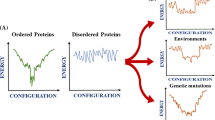Abstract
We report on a facile method to detect the aggregation and co-aggregation of peptides by tryptophan fluorescence spectroscopy. Peptide aggregates (PAs) play a pivotal role in neurodegenerative diseases, such as Alzheimer’s and Parkinson’s. The detection of the formation of aggregates, especially in the early stage, will facilitate the diagnosis and treatment of the associated disease. In this study, by choosing a tryptophan-containing peptide of EP2, we investigated its fluorescence spectroscopic characteristics in the process of PAs. The results showed that the intensity of emission spectra was significantly enhanced with the formation of PAs within 48 h. In addition, by employing EP2 as a fluorescence probe, we found that EP2 was able to effectively monitor the aggregation of other peptides/proteins that are otherwise difficult to detect with conventional approach. Thus, these preliminary data provide a promising diagnostic tool to detect the formation of PAs.

A rapid and facil method for detection of peptide aggregation was provided by using an amyloidforming peptide EP2 as a “fluorescence probe”.




Similar content being viewed by others
References
Chiti F, Dobson CM. Protein misfolding, functional amyloid, and human disease. Annu Rev Biochem. 2006;75:333–66.
Yang CI, Tsai BN, Huang SJ, Wang TY, Tai HC, Chan JC. Aggregation of beta-amyloid peptides proximal to zwitterionic lipid bilayers. Chem Asian J. 2015;10(9):1967–71.
Collier JH, Rudra JS, Gasiorowski JZ, Jung JP. Multi-component extracellular matrices based on peptide self-assembly. Chem Soc Rev. 2010;39(9):3413–24.
Wen Y, Liu W, Bagia C, Zhang S, Bai M, Janjic JM, et al. Antibody-functionalized peptidic membranes for neutralization of allogeneic skin antigen-presenting cells. Acta Biomater. 2014;10(11):4759–67.
Picou R, Moses JP, Wellman AD, Kheterpal I, Gilman SD. Analysis of monomeric Abeta (1–40) peptide by capillary electrophoresis. Analyst. 2010;135(7):1631–5.
Wen Y, Roudebush SL, Buckholtz GA, Goehring TR, Giannoukakis N, Gawalt ES, et al. Coassembly of amphiphilic peptide EAK16-II with histidinylated analogues and implications for functionalization of β-sheet fibrils in vivo. Biomaterials. 2014;35(19):5196–205.
Zheng Y, Wen Y, George AM, Steinbach AM, Phillips BE, Giannoukakis N, et al. A peptide-based material platform for displaying antibodies to engage T cells. Biomaterials. 2011;32(1):249–57.
Hamley IW. Peptide fibrillization. Angew Chem Int Ed Engl. 2007;46(43):8128–47.
Maji SK, Perrin MH, Sawaya MR, Jessberger S, Vadodaria K, Rissman RA, et al. Functional amyloids as natural storage of peptide hormones in pituitary secretory granules. Science (New York, NY). 2009;325(5938):328–32.
Wen Y, Kolonich HR, Kruszewski KM, Giannoukakis N, Gawalt ES, Meng WS. Retaining antibodies in tumors with a self-assembling injectable system. Mol Pharm. 2013;10(3):1035–44.
Saunders MJ, Liu W, Szent-Gyorgyi C, Wen Y, Drennen Z, Waggoner AS, et al. Engineering fluorogen activating proteins into self-assembling materials. Bioconjug Chem. 2013;24(5):803–10.
Munch J, Rucker E, Standker L, Adermann K, Goffinet C, Schindler M, et al. Semen-derived amyloid fibrils drastically enhance HIV infection. Cell. 2007;131(6):1059–71.
Pawar AP, Dubay KF, Zurdo J, Chiti F, Vendruscolo M, Dobson CM. Prediction of "aggregation-prone" and "aggregation-susceptible" regions in proteins associated with neurodegenerative diseases. J Mol Biol. 2005;350(2):379–92.
Oskarsson ME, Paulsson JF, Schultz SW, Ingelsson M, Westermark P, Westermark GT. In vivo seeding and cross-seeding of localized amyloidosis: a molecular link between type 2 diabetes and Alzheimer disease. Am J Pathol. 2015;185(3):834–46.
Tan S, Li L, Lu L, Pan C, Lu H, Oksov Y, et al. Peptides derived from HIV-1 gp120 co-receptor binding domain form amyloid fibrils and enhance HIV-1 infection. FEBS Lett. 2014;588(9):1515–22.
Tan S, Lu L, Li L, Liu J, Oksov Y, Lu H, et al. Polyanionic candidate microbicides accelerate the formation of semen-derived amyloid fibrils to enhance HIV-1 infection. PLoS One. 2013;8(3):e59777.
Jia M, Yi H, Chang M, Cao X, Li L, Zhou Z, et al. Fluorescence kinetics of Trp-Trp dipeptide and its derivatives in water via ultrafast fluorescence spectroscopy. J Photochem Photobiol B Biol. 2015;149:243–8.
Gakamsky DM, Dhillon B, Babraj J, Shelton M, Smith SD. Exploring the possibility of early cataract diagnostics based on tryptophan fluorescence. J R Soc Interface. 2011;8:1616–21.
Naik A, Kambli P, Borana M, Mohanpuria N, Ahmad B, Kelkar-Mane V, et al. Attenuation of lysozyme amyloid cytotoxicity by SPION-mediated modulation of amyloid aggregation. Int J Biol Macromol. 2015;74:439–46.
Verma M, Vats A, Taneja V. Toxic species in amyloid disorders: oligomers or mature fibrils. Ann Indian Acad Neurol. 2015;18(2):138–45.
Easterhoff D, DiMaio JT, Doran TM, Dewhurst S, Nilsson BL. Enhancement of HIV-1 infectivity by simple, self-assembling modular peptides. Biophys J. 2011;100(5):1325–34.
Acknowledgments
This work was financially supported by the National Nature Science Foundation of China (No. 31370781) to Dr, Shuwen Liu, and the start-up funding from Southern Medical University (No. B1040903) and Science and Technology Department of Guangdong Province (No. 2014A020210014 and 2015A020211010) to Dr. Jian He.
Author information
Authors and Affiliations
Corresponding author
Ethics declarations
Conflict of interest
The authors declare that they have no competing interest.
Rights and permissions
About this article
Cite this article
Lin, D., Ren, R., Tan, Q. et al. A facile and dynamic assay for the detection of peptide aggregation. Anal Bioanal Chem 408, 1609–1614 (2016). https://doi.org/10.1007/s00216-015-9271-4
Received:
Revised:
Accepted:
Published:
Issue Date:
DOI: https://doi.org/10.1007/s00216-015-9271-4




